INVITED TO TAKE PART in an Institute of Electrical and Electronics Engineers (IEEE) panel discussion on UFOs some 33 years ago, Washington aerospace journalist Philip J. Klass needed to bone up on the subject. Thanks to a favorable review in the Wall Street Journal, Phil bought a copy of John G. Fuller’s Incident at Exeter, which was filled with reports of glowing balls of fire near high-tension power lines. Klass became an instant “believer” in UFOs — as a possible freak atmospheric electrical phenomenon similar to ball lightning. But more research led him to discover that UFOs were not nearly so one-dimensional. And the burning quest to explain them all (his critics would say “explain them all away”) would consume him to this day.
Dubbed the “Sherlock Holmes of UFOlogy” in a book review, Klass’s public persona more closely resembles that of the late Howard Cosell. He may rub many the wrong way but, like Cosell, Klass “tells it like it is,” and welcomes the ensuing heat. Still a workaholic 13 years into his active retirement, Klass typically put in a 40+ hour week throughout his 34-year tenure as senior avionics (aviation electronics) editor of Aviation Week & Space Technology magazine (Av Week), known as the “Bible of the aerospace industry.” He commonly stayed up past midnight working on UFO-related matters, including responding to the 5-10 daily inquiries, some from lands as distant as India and Russia.
Graduating from Iowa State in 1941 with a B.S. in electrical engineering, Klass worked as an avionics engineer for General Electric. In 1952 he decided to try his hand at technical journalism with Aviation Week. One of only two journalists ever to be named an IEEE Fellow, Klass has also been honored by the Aviation/Space Writers Association with awards in 1972, ’74, ’75, ’77, and ’86. In 1989, the Association presented him with its ultimate tribute, the Lauren D. Lyman Award for a career distinguished by “the qualities of integrity, accuracy and excellence in reporting.” In 1998, the Royal Aeronautical Society (London) bestowed upon him its Boeing Decade of Excellence Award for lifetime achievement.
In 1976, Klass helped to found the Committee for the Scientific Investigation of Claims of the Paranormal (CSICOP), and has served on its Executive Council since the outset. He also chairs CSICOP’s UFO Subcommittee, and has contributed numerous articles on UFOs to CSICOP’s journal, Skeptical Inquirer. In March of 1999, with a little help from his friends, the International Astronomical Union formally changed the name of asteroid 1983 RM2/7277 to “Klass.”
Klass has written six books on UFOs, including one for young readers. His one non-UFO book, Secret Sentries in Space (1971), was the first to deal with spy satellite technology. He is also proud of having written the first article on secret inertial guidance technology (1956), the first on infrared missile guidance and detection (1957), and the first on the coming age of microelectronics (1957) in which he predicted — without benefit of “psychic” power — that the then-embryonic technology would revolutionize electronics.
Phil, who has a younger sister, was born in Des Moines and reared in Cedar Rapids, Iowa. He dedicated his first book to his father, whom he credits with imparting to him “the crusader’s zeal for what seems ‘right’ regardless of whether it brings popular acclaim.” His mother had the honor/duty of proofreading his second book, UFOs Explained, which is still widely regarded as the best ever written on the subject. Although he has no children of his own, Phil has been married for nearly 20 years to Nadya, who, after escaping from communist Bulgaria with her son in 1973, joined the Voice of America as a news editor for its Bulgarian service. And though I don’t believe him, Phil claims to have no fear of “UFO abduction” when walking Shi-Shi, his Lhasa apso, along the Potomac waterfront.
In a missive to a gossipy newsletter called Saucer Smear, a critic has written that my own “primary claim to fame is being [the] lowly proofreader for Klass’s SUN,” his bi-monthly Skeptics UFO Newsletter, which keeps more than 300 subscribers across the U.S. and other countries up to date with its cutting-edge coverage. My relationship with Klass actually began about 20 years ago, when I wrote him about a few classic UFO cases whose implications were staggering — if the incidents were genuine. I had been an activist “believer” well into my 20s, and in high school I had even served as Maryland’s “Youth Council” representative to NICAP, the most respected of the pro-UFO organizations of that era. But my dialogue with Phil introduced me to the concept of “critical thinking,” previously a black hole in my education despite a Phi Beta Kappa key and medical degree. And we have been good friends ever since.
An infrequent sailor but avid snow skier until just a few years ago, Klass, age 80, now ambulates with the assistance of a walker. In 1997 an anesthesiologist at Johns Hopkins Hospital managed to nearly silence his voice by traumatizing, and permanently paralyzing, one of his vocal cords. But Klass’s mind — and pen — remain razor sharp, to the delight of his grateful followers and to the constant vexation (or worse) of his legions of detractors.
Skeptic: How do you account for the virulence of your critics?
Klass: I’m flattered, because it reveals that my efforts have struck a sensitive nerve.
Skeptic: You’ve almost gleefully shown me a letter in which an anonymous writer calls you a “scurrilous, untruthful, un-American, cheating ignoramus.” Are your efforts motivated, in part, by a desire to provoke such visceral responses?
Klass: Not in the slightest. My sole objective is to either find a credible prosaic explanation for a UFO report, or if that isn’t possible, then to rush to my typewriter — now my PC — and write the most important story of my life for Av Week ,which would be the most significant article we’ve ever published.
Skeptic: But in your personal correspondence with some of your critics, you do like to “tweak” them pretty good at times.
Klass: I find that while some “pro-UFOlogists” are sorely lacking in a sense of humor, others enjoy tongue-in-cheek chit-chat. But I fail to see how that relates to the UFO cases that I investigate.
Skeptic: Well, one of the main raps against you is that, rather than acknowledging that a UFO case has no apparent prosaic explanation, you instead resort to crying “hoax.”
Klass: I never encountered a single hoaxer during my entire 10 years with GE. And in my first 14 years at Av Week, up until the time I began investigating UFO reports, I encountered only one spinner of tall tales. So, believe it or not, when I first began looking at UFO reports, I naturally assumed that the witnesses were probably just honestly describing what they believed they had seen. But I quickly learned that I was too trusting.
My first major investigation was in 1966 when I visited Socorro, NM. Two years earlier, a policeman — Lonnie Zamora — had reported witnessing an egg-shaped UFO land, two ETs in coveralls briefly scurry around, and then the UFO blast off like a rocket. Now at that time, I suspected that some glowing UFOs near high-tension power lines might be freak atmospheric phenomena which I called “plasma UFOs,” similar to ball lightning. And I knew that the Socorro area frequently suffered intense thunderstorms. So, I suspected that Zamora might have seen a plasma. Dr. J. Allen Hynek had already briefly investigated this case for the Air Force’s Project Blue Book and had rejected the possibility of a hoax, so that thought hadn’t even entered my mind when I went down there.
But that began to change when an atmospheric physicist at the New Mexico Institute of Technology in Socorro told me that he hadn’t even bothered to take the few minutes drive to the site. He explained to me how the town was economically depressed and that city officials were trying to attract industry, and urged me to “nose around” a bit. I soon learned that the local newspaper ran a box in every issue saying that the most efficient way to attract new industry is to first attract tourists. When I interviewed a man who lived right near the landing site, and had been working in his garden when the UFO supposedly blasted off, he told me that he hadn’t heard a thing, and that when he visited the site soon afterwards he saw no physical evidence to support Zamora’s story and suspected that it was a hoax. When I interviewed the police radio dispatcher who had taken Zamora’s call for backup, he recalled that, strangely, Zamora had not requested a fellow police officer or someone from the Socorro sheriff’s office, but instead asked that a specific state trooper be sent. And I found out that Socorro’s mayor owned the “landing site” property and the town’s only bank, and earlier had sought approval to build a new road to the UFO site for the benefit of tourists. So, when I wrote UFOs: Identified, I was confident enough to suggest that this case might be a hoax. And by the time my second UFO book, UFOs Explained, was published, I did unequivocally characterize the case as a hoax, as I’ve done subsequently regarding a number of other highly suspicious cases.
Skeptic: But the Socorro “tourist trap” was never built.
Klass: Yes, but the plan had been initiated. On the first anniversary of the “landing,” a newspaper article quoted a city official as saying outright that they intended to use it as a tourist attraction, and it reported that the road to the site had recently been upgraded. It also mentioned that a movie about UFOs had recently shot some scenes in Socorro. Perhaps when members of the City Council learned the truth, they opted not to proceed any further with the plans.
Skeptic: In UFOs: Identified, you actually endorsed a photo as a genuine “plasma UFO,” only to later realize that you had been hoaxed. Might that embarrassment have caused you to become a bit too quick to cry “hoax”?
Klass: Too quick? I don’t think so, no. But it sure taught me not to be too trusting of seemingly honest folks. That was the first UFO-photo case I ever investigated. A teenager named James Lucci had taken two nighttime photos of a glowing “plasma-looking” UFO in front of the moon. I saw them in John Fuller’s Incident at Exeter, which was the first UFO book I ever read. But even though the pictures had been “authenticated” by a respected investigator with NICAP, I felt I should make my own investigation. So I interviewed James and his older brother John, and afterwards I had no particular reason to doubt their word. I also spoke with their father, who was a professional photographer in the Air Force and had been in Europe when the photos were taken. He told me that he had no idea how anyone could fake photos like that. But one of them faintly resembled a kitchen saucer held in the palm of a hand. So I asked James if he would allow me to photograph him in his front yard — where the UFO photos had been taken — with him holding a kitchen saucer. He flatly refused to do that, but he did agree to take a picture of me holding a saucer. But that photo, and some more like it that I took after I got home, were done in daylight, without a flash to make them “glow,” and they didn’t look anything like the Lucci photos. Then, shortly after my book was published, I learned that a photographic analyst for the University of Colorado’s “Condon (UFO investigation) Committee” had managed to create a flash photo that looked somewhat similar to Lucci’s. And sometime later, Robert Sheaffer created an even better one, and that finally convinced me that I had been “had.” It wasn’t until about 20 years later that John Lucci finally admitted to another investigator that the photos were indeed bogus.
Skeptic: What case took the most time to find a solution?
Klass: I spent several years on the 1978 New Zealand case. That one received a lot of media coverage because of the videotape that was taken by a TV crew flying aboard a plane along the coastline. Dr. Bruce Maccabee, who’s a well-known pro-UFO researcher and optics specialist, visited New Zealand and claimed that all of the diverse UFOs taped during that flight defied prosaic explanation. During the next few years, Bruce and I exchanged — and I’m not exaggerating — approximately 2,500 pages of single-spaced, type-written letters about the details of this case. And while those exchanges were going on, I learned that after the incident, the pilot had had a suspicion that the longest-duration UFO — which resembled the full moon because it had been filmed with an out- of-focus telephoto lens — might have actually been one of the Japanese squid boats that use intense illumination to attract the squid. And when the pilot checked the official records, he found that one Japanese squid boat captain had registered his intention to fish in the vicinity of Christchurch, NZ, where the UFO was filmed. Part of the case had also involved “radar-blip” UFOs detected during an earlier flight. But a New Zealand scientist found that this particular radar often displayed spurious blips, some from surface ships and trains, under temperature-inversion atmospheric conditions. I even included a photo showing spurious blips on the same radar screen in my book, UFOs: The Public Deceived, which contains three entire chapters on this complex case. But in spite of all that, Maccabee rejected the Japanese squid-boat explanation, and declared the case inexplicable in prosaic terms. And not long after that, he endorsed the two dozen “hokey-looking” UFO photos taken by Ed Walters in Gulf Breeze, FL, which many pro-UFOlogists now agree are double-exposure hoaxes.
Skeptic: Let me ask you about the “MJ-12” crashed-saucer government documents that Stanton Friedman and others have promoted. You’ve labeled them a hoax as well. But didn’t you lose a $1,000 bet with Friedman over the authenticity of one of them?
Klass: I did pay Friedman $1,000 in 1989 after he successfully met one of my challenges — but it was not a “bet” or a “wager” because it was risk-free to him. William Moore and Jaime Shandera, who were two of Friedman’s partners in promoting the MJ-12 papers, claim that they discovered a memo in the National Archives purportedly written on July 14, 1954, by President Eisenhower’s special assistant, Robert Cutler. The fact that Cutler had actually been out of the country on official business on the day the memo — which, by the way, was unsigned — allegedly was written indicated that it was counterfeit. But another suspicious aspect to me was that it had been typed in “pica” typeface rather than the smaller “elite” typeface that was used in all the Cutler office letters that I had obtained from the Eisenhower Library archives. So, thinking I had a sure hand, I offered to pay Friedman $100 for every genuine Cutler letter that he could find that was written on a pica-face typewriter — up to a total of $1,000. To my surprise, Friedman was able to find about 20 such letters, and I promptly sent him my check. But, mind you, this was more than a year after he had refused my proposed “wager” which could have yielded him many thousands of dollars if he were able to demonstrate that the MJ-12 crashed-saucer documents were authentic — but which could have cost him money if they proved counterfeit. The evidence that they are phony is overwhelming, as I’ve detailed in numerous articles.
Skeptic: You’ve been accused of being a “disinformation agent” of the government, or of the “military-industrial complex.” So, the charges go, if you knew that our government really did possess a crashed saucer, you would work to keep the story buried so that other countries, and their industries, couldn’t get their hands on that technology.
Klass: I do admit that a certain government agency pays me $100,000,000 per year plus taxi fare. But the money goes into a secret Swiss bank account whose number I’ve forgotten — and the agency refuses to provide it to me again. But, seriously, there’s no way Washington could keep a story like that a secret for long, considering how many military and industry scientists would need to be involved. For example, back in the late ’60s I learned that the Atomic Energy Commission was worried that anti-Vietnam-war protesters might try to hijack a truck carrying nuclear weapons. The AEC even sought White House approval to deploy its own satellite system so it could continuously monitor the location of its trucks. I decided it best to “sit” on that story, but within several weeks it had leaked to the Washington Post. Look, if a UFO were to crash in the U.S., another might crash in the USSR, or Cuba, or China, or Switzerland, and one of those governments might opt to exploit the incident publicly rather than keeping it under wraps. So, while I might “sit” on a secret like that for a few days or a few weeks, I would then write the article for Av Week and graciously accept my Pulitzer Prize.
Skeptic: Some researchers claim that they do have military sources who confirm the existence of a crashed saucer. Hypothetically, of course, if official Washington were somehow managing to otherwise keep the facts secret, would you continue to “sit” on the story until the truth came out in the Post?
Klass: I consider this a bit hyper-hypothetical. But, if you insist, the answer is “not for long,” for the reasons I just cited. The only secrets that can be successfully kept secret are those known to only one person.
Skeptic: But, hyper-hypothetically, suppose you were to discover tomorrow that, in the name of national security, the government truly has been covering up the existence of a crashed saucer at Area 51. Would you publish the story, or “sit” on it?
Klass: I’d first try to find out when it had been recovered: if within the past few days, I’d sit on it briefly and talk to sources to find out what the government planned to do. But if it had been recovered some weeks, or years, earlier, I’d also talk to sources, but then I’d rush to my PC to write the greatest story of my career.
Skeptic: So you’d break the story even if, hyper-hypothetically, the government had successfully kept this alien technology confined to Area 51 for the past 50 years?
Klass: Yes, indeed, and it would be, by far, the most exciting story of my life.
Skeptic: Considering your position with Aviation Week & Space Technology magazine, are you privy to what sort of top-secret activity really goes on at Area 51?
Klass: I’ve never been there, but I know it’s where we first tested our then-secret U-2, and later our SR-71, spy planes, and more recently our F-117A stealth fighter. Undoubtedly it’s used for flight tests of experimental aircraft of novel designs. And I believe it’s also used for testing new types of decoy flares to protect our aircraft against enemy infrared-guided missiles. That whole area is a part of Nellis Air Force Base, where they periodically conduct simulated combat training exercises to evaluate our latest tactics and electronic countermeasures against simulated enemy anti-aircraft missiles. I think experimental planes might account for a few of the UFO reports generated from there, and the flare decoys probably account for others.
Skeptic: Have you ever seen anything in the sky that had you puzzled?
Klass: Yes, several times. The most recent was in 1995 near Seattle, where I was scheduled to give a UFO lecture to the local chapter of the Institute of Electrical and Electronics Engineers. It was about 7:25 p.m., shortly before my lecture, and I was standing outside chatting with several attendees when one of them pointed to the sky and asked, “What’s that?” I saw what appeared to be an orangish, structured object that was just hovering there. Someone said, “It’s a kite,” but I responded, “No, it’s at much too high an altitude,” which I estimated to be at least several thousand feet. I thought it might be a weather balloon illuminated by the setting sun, but someone said, “No, it can’t be. It’s not moving.” Then suddenly one of the men said, “I think I have binoculars in my car,” and he went to retrieve them. A few moments later he returned and announced, “It’s a kite,” and handed me the binoculars. He was correct. But if not for those binoculars, I would have to “admit” that I had seen a UFO that I could not positively identify. But it wasn’t doing anything extraordinary, like flying at hypersonic speed or making right-angle turns, so I would have assumed that this UFO had a prosaic explanation.
Skeptic: Some of your critics harp about the absence of “internal criticism” among the “skeptics”—how we always agree with each other on everything. Have you ever found the work of a fellow skeptic worthy of criticism?
Klass: Jim Oberg, whom I greatly admire and have worked with — for example, in debunking the claim that Korean Air Lines 007 was on an espionage mission when it was shot down by the Soviets — has claimed that the U.S. government has used UFOs as “disinformation” to hide “black projects.” I disagree with him on that, for the most part. If, before the existence of our “Stealth” program was made public, a person reported seeing a strange-looking, triangular-shaped craft, I wouldn’t have expected the Air Force to issue a public statement to the effect that the object was not a “UFO” but an F-117A. So perhaps Oberg is correct about a few rare instances such as this. But I don’t believe such disinformation has been widespread. And I have challenged Martin Kottmeyer on his theory that Kenneth Arnold’s flying discs were probably a squadron of geese or other birds. But, to my knowledge, I have never encountered falsehoods or coverup of data when dealing with a fellow skeptic.
Skeptic: It was Kenneth Arnold’s sighting in 1947 that inspired the term “flying saucers.” You said that you disagree with a skeptic who thinks Arnold saw a formation of birds, but I’ve read where you suspect that he might have seen fragments of a glowing meteor breaking up in the atmosphere. Shouldn’t a pilot be able to tell a glowing fireball from a non-glowing craft?
Klass: Surprisingly not. For example, in 1969 two airliner crews and a military fighter pilot flying near St. Louis did indeed mistake a glowing meteor-fireball, along with its several fragments, for a squadron of “UFOs.” Fortunately, an alert newspaper photographer near Peoria managed to get a good photo of the meteor-fireball and one of its fragments. Otherwise, this incident could well have become a classic UFO case. The pilots all reported that the UFOs nearly collided with them, even though the photograph and other sighting reports showed that the meteor was at least 125 miles north of the aircraft.
Skeptic: The famous case from July 1952, when UFOs were picked up on radar for several nights over Washington, DC, got a boost last year from the Fund for UFO Research. Has their report caused you to change your opinion of what really happened there?
Klass: Not at all. The report’s introduction contains elementary errors, such as confusing “temperature inversions” with “mirages.” And the body of the report doesn’t make the case. The confusing echoes picked up on the radar screens were most certainly the result of false propagation due to “temperature inversion.” The following year the CAA — which is now the FAA — reported that just a month after the Washington incidents, its investigators monitored similar anomalous echoes on a radar scope in Washington during another hot, humid spell. Early radar was prone to this sort of problem, but since digital processors were introduced about 20 years ago, “radar UFO” cases have almost disappeared.
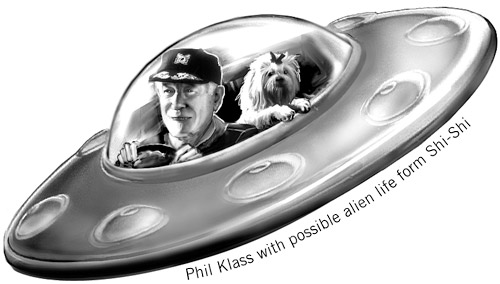
Skeptic: But during the DC case, didn’t some pilots report seeing the “UFOs” as they were also being tracked on radar?
Klass: No. As a matter of fact, about 20 years ago I received a letter from one of the pilots who had been “scrambled” to Washington in his F-94 interceptor on one of those nights. He saw nothing in the sky, but said that the pilot of a companion F-94 did report seeing several lights. But that plane was flying at extremely low altitude and, the letter said, the other pilot had likely seen headlights from vehicles on the ground that were driving up enough of a slope to make their lights visible from the air.
Skeptic: In your book about the Roswell case, you agree that there has been a coverup—not by the government — but by the pro-UFOlogists and the media! That sounds 180 degrees out of phase from the prevailing public opinion.
Klass: I certainly don’t level the charge of “coverup” against all pro-UFOlogists on all cases. But I do accuse other Roswell book authors of coverup, as I do the TV shows that interviewed me for their “Roswell” reports and edited out, like those book authors, the key facts. Here’s what I mean. They like to cite documents such as the formerly “Secret” September 1947 memo, to a top Air Force intelligence official at the Pentagon, from Lt. Gen. Nathan Twining, in which he expressed his view that UFOs are “something real” and not imaginary. But three major pro-Roswell books of which I am aware all managed to leave out the portion of Twining’s note in which he laments “the lack of physical evidence” such as crashed-saucer fragments that would provide “undeniable proof” of the existence of UFOs. And this memo was written more than two months after the saucer supposedly had crashed at Roswell. Twining would certainly have known if such an event had really occurred — he was commander of the Air Materiel Command at Wright Field (now Wright-Patterson AFB) in Dayton, which was the center of the Air Force’s top technical experts and laboratories and also where its Foreign Technology Intelligence Center was located. And there are other formerly classified government documents from the late 1940s — after the ’47 Roswell incident — that convey similar frustration of top officials about the absence of any physical evidence which would prove beyond a doubt that some UFO reports involved craft and help identify their origin. When CBS’s 48 Hours taped me for a segment on Roswell that aired in 1994, I even held up one of those “Top Secret” documents to the camera, pointing out the relevant passages. But, for obvious reasons, they edited out that entire portion of the interview.
Skeptic: One of your most severe critics has accused you of a sin worse than coverup — McCarthyism — charging that you once pressured a university into canceling a scheduled pro-UFO conference by comparing UFOlogists to Communists.
Klass: To the best of my aging recollection, I have never attempted to get any organization to cancel a pro-UFO conference or any of its selected speakers. But I know what you’re referring to. Back in 1983 I received a phone call from a faculty member of the University of Nebraska at Lincoln, who was embarrassed because the school was sponsoring a conference on the alleged “Cosmic Watergate Government UFO Coverup,” and no skeptical speakers were on the agenda. So I decided to write a short article “needling” the university. But before doing so I needed to interview an appropriate official. So I called Prof. Robert Mortenson, the school’s director of conferences, who expressed surprise to hear that no skeptics had been invited. He told me that he appreciated my concern, and that if they were to sponsor a UFO conference the next year, there should be a better effort made to balance the presentation. At one point during that telecon I did say that, although I am not suggesting that any of the people or organizations involved in the conference are in any way affiliated with communist fronts or the Soviet Union, nevertheless, their reckless “Watergate-type coverup” charges against eight administrations, going all the way back to President Truman, serve, not unlike communist propaganda, to foment distrust and suspicion of the integrity of our government. I also very distinctly remember telling Mortenson, “Let me emphasize to you that I am not, repeat not, suggesting that you cancel or terminate this conference.” Again, that was in 1983. A newspaper article the following year quoted Mortenson as saying that the university had decided not to hold another UFO conference that year because the ones in 1982 and 1983 had lost money.
Skeptic: If your conversation with Mortenson was that benign and well received, where did the “McCarthyism” accusation come from?
Klass: Well, following our conversation, Mortenson wrote a brief memo about it to an assistant chancellor. But he misquoted me as having said that conferences like this “lend support to the Communist movement,” which carries quite a different connotation — I had been very, very deliberate in my choice of words to insure that I would not be misunderstood. Anyway, who leaked the memo I don’t know. But photocopies of it were distributed at the conference. And the next issue of the MUFON UFO Journal said that I had tried to “scuttle” the conference because it, and others like it, were “aiding the Communist cause.” In the same issue, MUFON’s director, Walt Andrus, quoted the memo verbatim and even indicated that he had in his possession copies of Mortenson’s original handwritten notes that he had jotted down during our conversation. So, armed with all that, one of my most vehement critics began to hurl the charge of “McCarthyism” against me — even though I had earlier provided him with a verbatim quote of what I had actually said. Mortenson later denied in a letter to me that either he or his deputy had given his notes to Andrus, but he did say that copies of his memo had been sent to the program coordinator and the “file” for informational purposes. But as for exactly what I did say in that conversation, it is just as I told you. When I picked up the phone to call Mortenson, I was planning to write an article, but I never did because he sounded so gratified to learn from me that the panel was so biased, and even asked me if CSICOP would provide speakers for the next year’s conference. And because I had planned an article, to assure accuracy I tape recorded that call and, fortunately, I still have that tape.
Skeptic: Is there any chance that you will be sharing a jail cell with Linda Tripp?
Klass: Unfortunately not. There was no law in DC prohibiting such taping. And the statute of limitations would have long since run out by now anyway. But another serious point I wish to make about the allegation that I favor keeping pro-UFOlogists from speaking: It was at my suggestion that CSICOP invited Dr. J. Allen Hynek to speak at our national conference in 1984, and Dr. Leo Sprinkle in ’86, and Dr. John Mack in ’94.
Skeptic: I never understood the dynamics of your relationship with Hynek. He began his UFO career as Project Blue Book’s “debunker”—he even came up with the famous “swamp gas” explanation for one case — but later he became a “believer” and founded the Center for UFO Studies, and often refused to appear on the same stage with you. Are you aware of anything in particular that caused your rift with him?
Klass: Only secondhand information that he thought I was a more effective debater than he was. He did refuse to appear with me on some radio and TV shows. But he accepted the CSICOP invitation even though he knew I would also be speaking there. And at the cocktail party he was most cordial, and we warmly embraced for a few photos that, as I recall, you took.
Skeptic: Ironically, some of your best “sources” are members of the pro-UFO community. Why do you think they confide in the “devil incarnate?”
Klass: Many of them have become sorely distressed over the growing credulity of the UFO Movement’s current leadership. For example, the strong endorsement by MUFON’s leaders and Bruce Maccabee of the Gulf Breeze photos, and the current focus on UFO “abduction” tales and crashed-saucer coverups. When I attend a MUFON conference, invariably several people will approach me to say things like, “Keep up the good work” and “Thanks for keeping us honest.”
Skeptic: In your book UFO Abductions: A Dangerous Game, you say that no one need fear being abducted by ETs unless they want to be abducted, because the experience is just a fantasy. Have you ever had occasion to look a troubled “abductee” in the eye — perhaps a patient of Dr. John Mack or one of the other abduction specialists — and say that?
Klass: Having spent more than 33 years investigating some of the most impressive UFO reports, without ever finding any credible evidence of ET visits, certainly that influences my views on people who claim to have been abducted by ETs. I’ve done several TV talk shows with “abductees,” but the hectic pace of the shows never offered the opportunity for on-camera confrontation, and they never linger on after the show to talk with me. However, shortly after publication of my book, I received a phone call from a young woman who had been involved in an “abductee support group” in the Washington area. Her father had given her a copy of the book to read, and she called to thank me for “opening her eyes to reality.” Not too long after that, I received a letter from a Boston man who had had a similar experience and thanked me for writing the book. But, on the other hand, several years ago I received a phone call from a psychotherapist in North Carolina whose patient — a 30ish divorcee with an 8-year-old son — had been referred to him by her medical doctor who had found a small growth that needed to be removed from the base of her brain. But the woman believed that it was an “alien implant” that should stay there until the ETs wanted to remove it themselves. Her doctor had suggested the psychotherapist, who had bought my book, and who gave it to the patient to read. So he called me to ask if I was willing to talk with her. He mentioned that her young son was now afraid to go out at night, fearing he too might be abducted. Anyway, several weeks later the woman called. I had hoped that, while she might still be inclined to believe, my book would have opened her eyes to a prosaic option. But instead, she bitterly attacked me for questioning that she had been selected for abduction by the ETs. And after about 15 minutes of that, I signed off, and I’ve never heard further from her or her psychotherapist. I wrote to him a couple years ago seeking an update, but never heard back. So, you win some, you lose some.
Skeptic: Can anyone ever really prove that UFOs — and the aliens, and the abductions, and the implants, and the painful needle extraction of eggs and sperm in order to breed alien-human hybrids — aren’t real?
Klass: When I first entered the UFO field in the mid-’60s, there were lots of interesting “nuts and bolts” type cases involving civilian and military pilots, radar, etc., where I could apply my avionics training and expertise. In those days there were relatively few hoaxes and many more instances of misidentification. If someone were to report to NICAP that they had seen a UFO flying over the White House at noon, NICAP would question that claim because of the lack of other witnesses. NICAP’s director, Maj. Donald Keyhoe, questioned the Betty and Barney Hill abduction claim, and NICAP officials were reluctant to fully endorse the Socorro case because of Zamora’s report of seeing two creatures. And in those days, if a person reported several UFO sightings, NICAP would characterize them as a “repeater,” and treat their claim with extra caution. But today the situation is vastly different. People like Budd Hopkins are putting the focus on UFO “abductions” and the claim that ETs can make themselves and their “abductees” invisible and can transport their victims through brick walls and glass windows. One of Dr. John Mack’s “abductees” claims that she has been taken aboard a UFO more than 100 times, and even that doesn’t prompt Mack to question her tales.
Skeptic: And what would you say to those critics who claim that you are motivated by some sort of “hatred” or “fear” of the idea that UFOs and ET visitations might be real?
Klass: As I turn 80, my fondest hope is that a genuine ET craft will land on our back patio and that I will be abducted. Hopefully, with the ETs’ advanced technology and knowledge, they will be able to cure my spinal and walking problems and the damage to my vocal cord. Of course, I would have to pay Stanton Friedman $10,000 — based on my long-standing wager that UFOs will never be proven real — but I would expect to become wealthy from the royalties of a new book titled Why Me, ET?. And instead of spending many hours each week “debunking” UFOs, I’ll finally have time to watch some TV, go to the movies, and perhaps get to read a few non-UFO books for enjoyment. I even keep my videocam near my bed in the hopes of being able to film a beautiful “Nordic-type” ET extracting sperm “the old-fashioned way.” ![]()
This article was published on January 17, 2013.


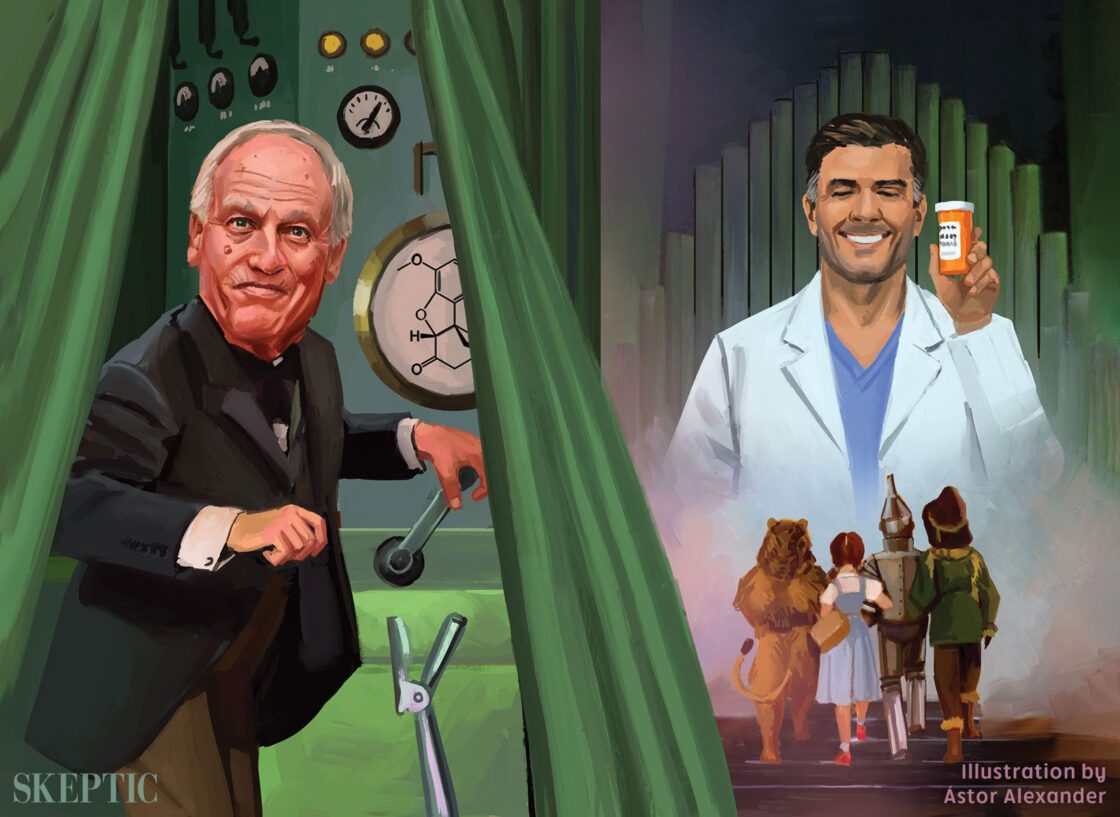
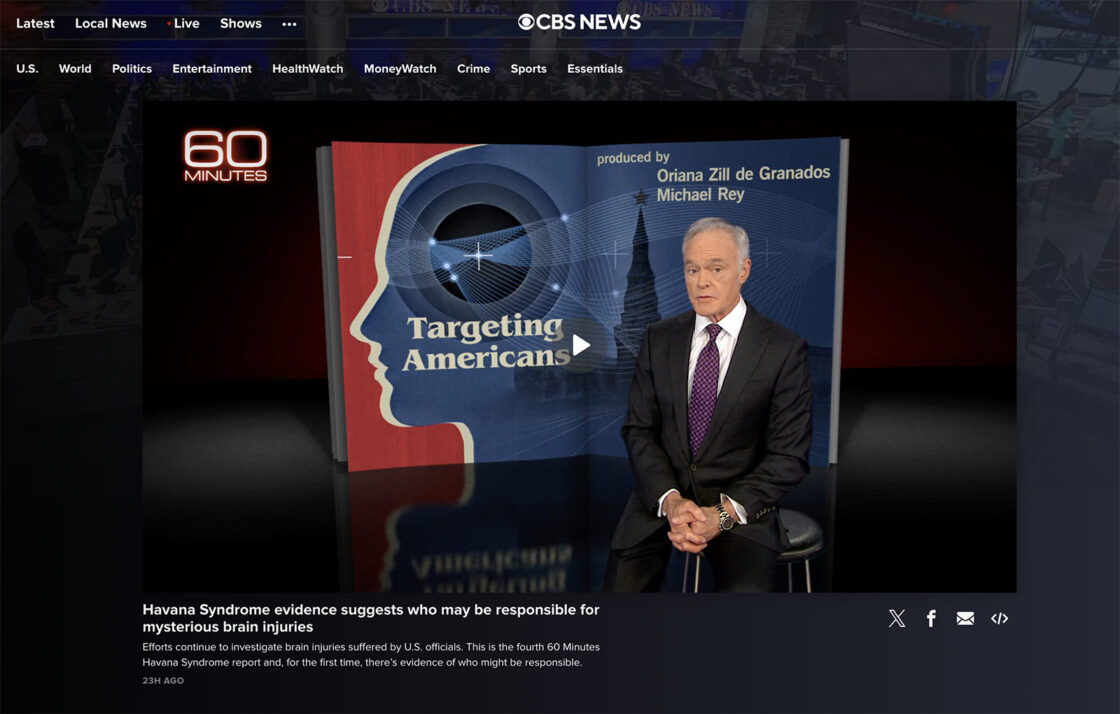
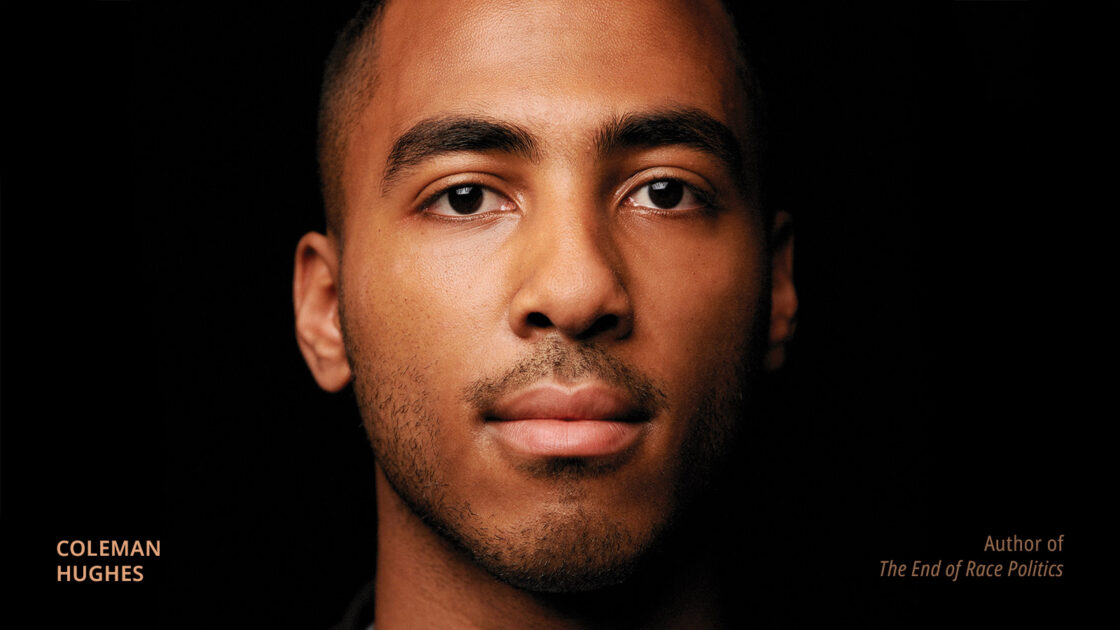

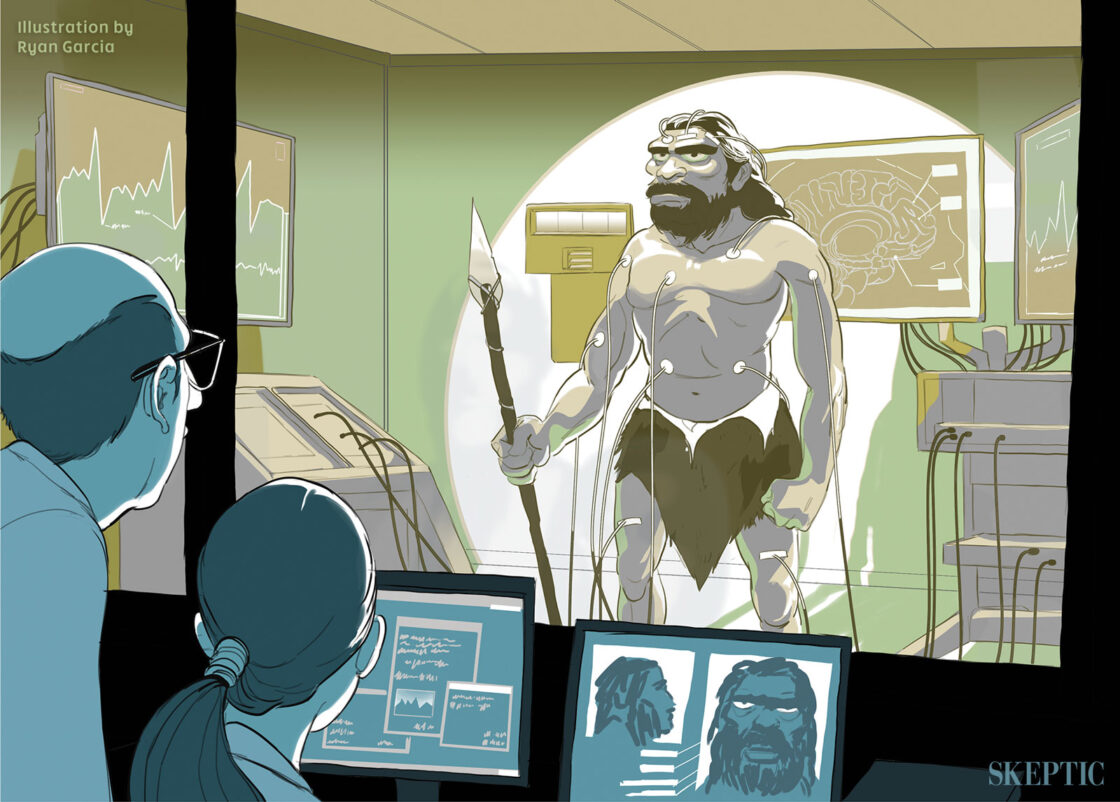
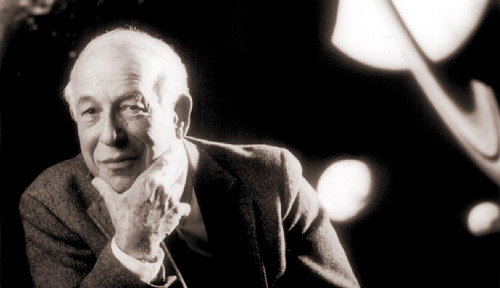










I really enjoyed Mr. Klass’s Books, “UFO’s Identified” and “UFO’s Explained”. I am not a scientist but no one never questions the logic of seeing UFO’s over a county or city for a short period. What was their purpose traveling so far never to be seen again? Considering the technology they would have to travel to Earth, I find the “Roswell Incident” laughable. It would be hard to imagine the “Mother Ship” not getting help to the “crash sight” quicker then the earthlings.
I don’t know & you don’t either who,how,when and where we are at all ? as if it seems that we are in the middle of some where while we are in actuality in the middle of nowhere.
Oh, I screwed up. The Vitamin E capsule-looking object, was at least 50 feet (500? 5000?) feet in diameter and flying supersonically (with no sonic boom).
IF UFO’s exist, and I am not saying that they don’t, then I am the least fortunate person I know of. Since first grade, I WOULD GO OUT AT NIGHT (when the skies were splendid, to use a term from the 1950’s!). IN 1958, I was given an excellent 3-inch reflector, and it was above-average in performance, for reasons that I did not understand until I became an amateur telescope maker in 6th grade, using a Foucault tester. I did not miss a night without observing the skies until Hurricane Dora. The only light pollution was from light bulbs, cars, porch lights, all easily avoided.
I majored in astronomy in 1969, and spent most nights in the observatory. I had spent weeks atop Mt. Mitchell with a great friend, and we saw nothing that we had no seen many times before.
Then, at 20:37 EST, I saw what looked like a Vitamin E capsule lit from the side moving very rapidly from Northwest to Southeast. There was a rolling ladder that I was on, and I watched as it disappeared into the ground haze. I wrote and recorded all that I could recall about this, and put it in my footlocker. One week later, an observatory in New Zealand reported exactly the same thing, right down passing over their zenith. This made little sense to me, but I analyzed times, possible velocities (if they were the same things), and checked out the satellite the NASA situation report, although if this was a satellite, it had only seconds to minutes to survive.
Years later, while camped under an oak hammock in the Ocala National Forest, what was almost certainly a stealth helicopter that clipped the top of a pine tree. Something metallic hit the ground, but we only spent less than an hour looking for the part that fell after sun up, west of Lake Delancey, since an engine block could be easily lost in tall grass and changing topography.
In 1991,we saw orange lights in the sky off of Navarre, Florida,near to Eglin AFB. We took movies of these, and, being ham radio operators,scanned frequencies and modes DC to light. Nothing unusual was detected,but these were NOT common flares! With well over one year of really looking at the sky by age 20, and over six years now, I have never seen anything other than just reported,and I really wanted to! I did stop the Florida Highway Patrol from burning up 426 Hemi engines that they were chasing every morning, reporting that the “UFO’s were staying with them.” Venus was close and a thin crescent, and exceedingly bright due to its proximity to Earth.
I once tricked an entire class by acting like Venus was a UFO. We rushed back to the Physics building,and I had everyone draw what they saw in roughly 6 inches in the major axes. Some of these had windows, and even people, or E.T.’s.
But, I am not at all sure about their existence. Way too many people with trained eyes like mine have reported the most remarkable “objects.” AFTER OVER SIX DECADES OF OBSERVING, I just reported what I could not explain. The jury is still out. A million proofs prove nothing, where one dis-proof can destroy eons of thought.